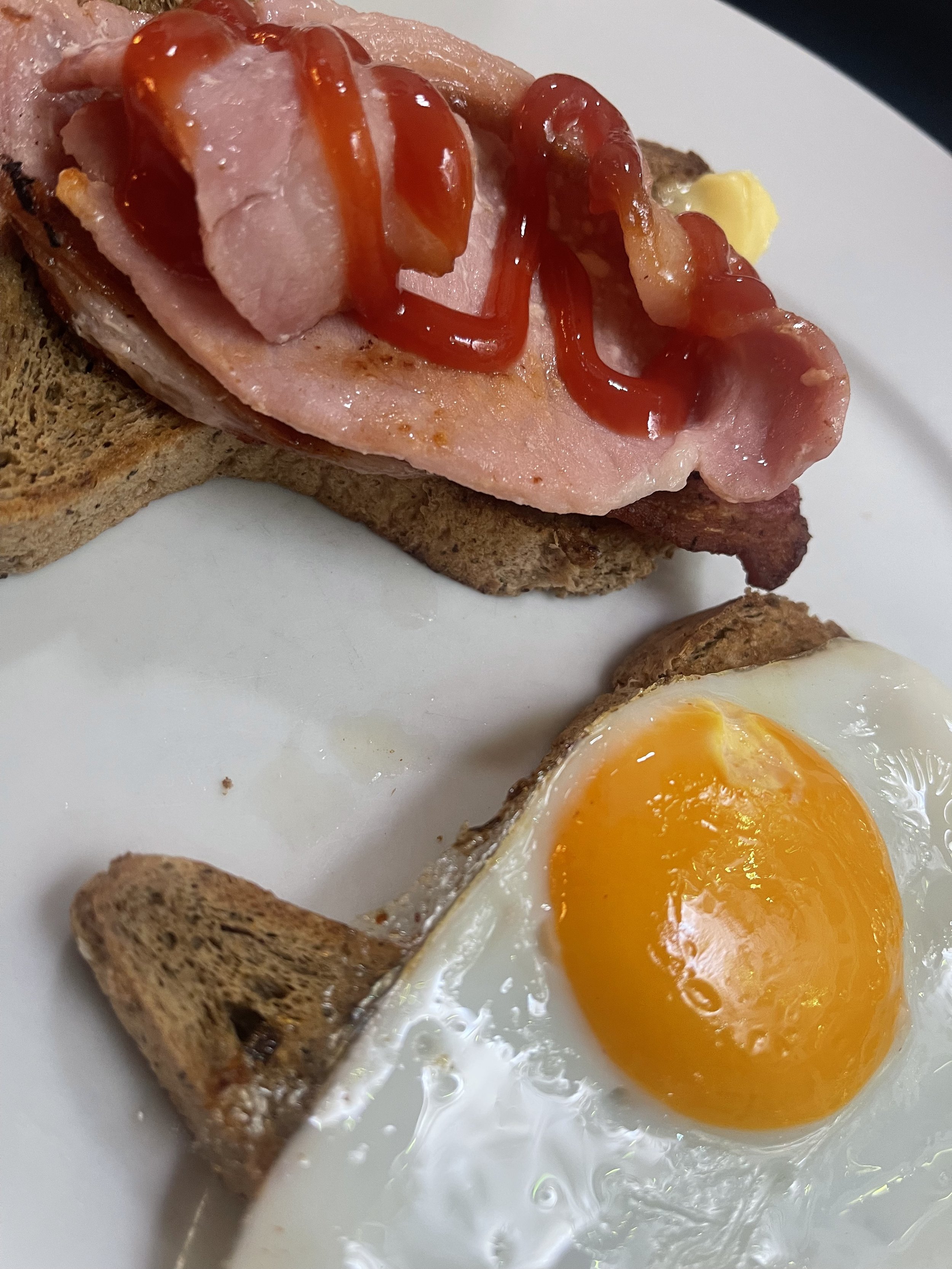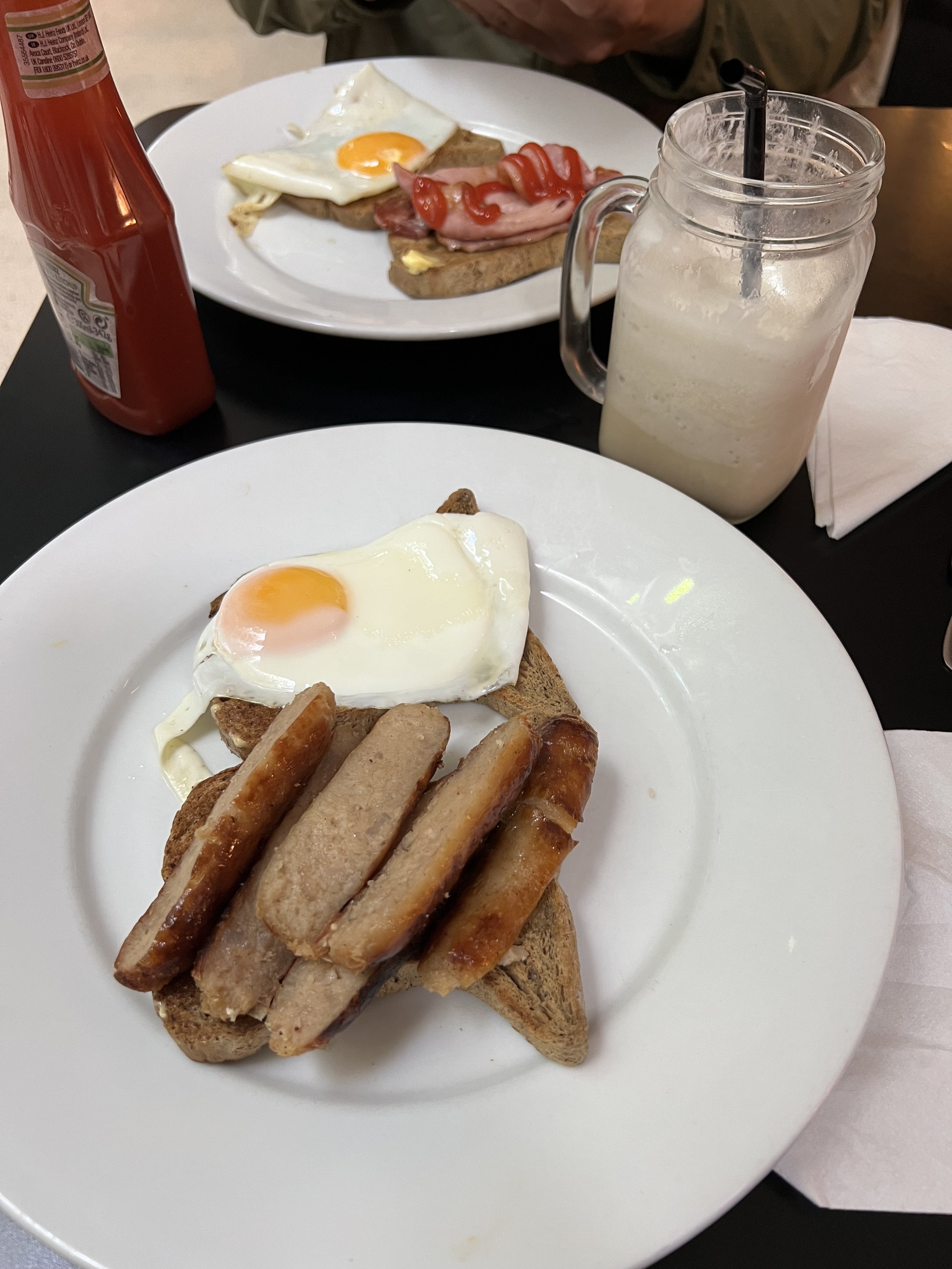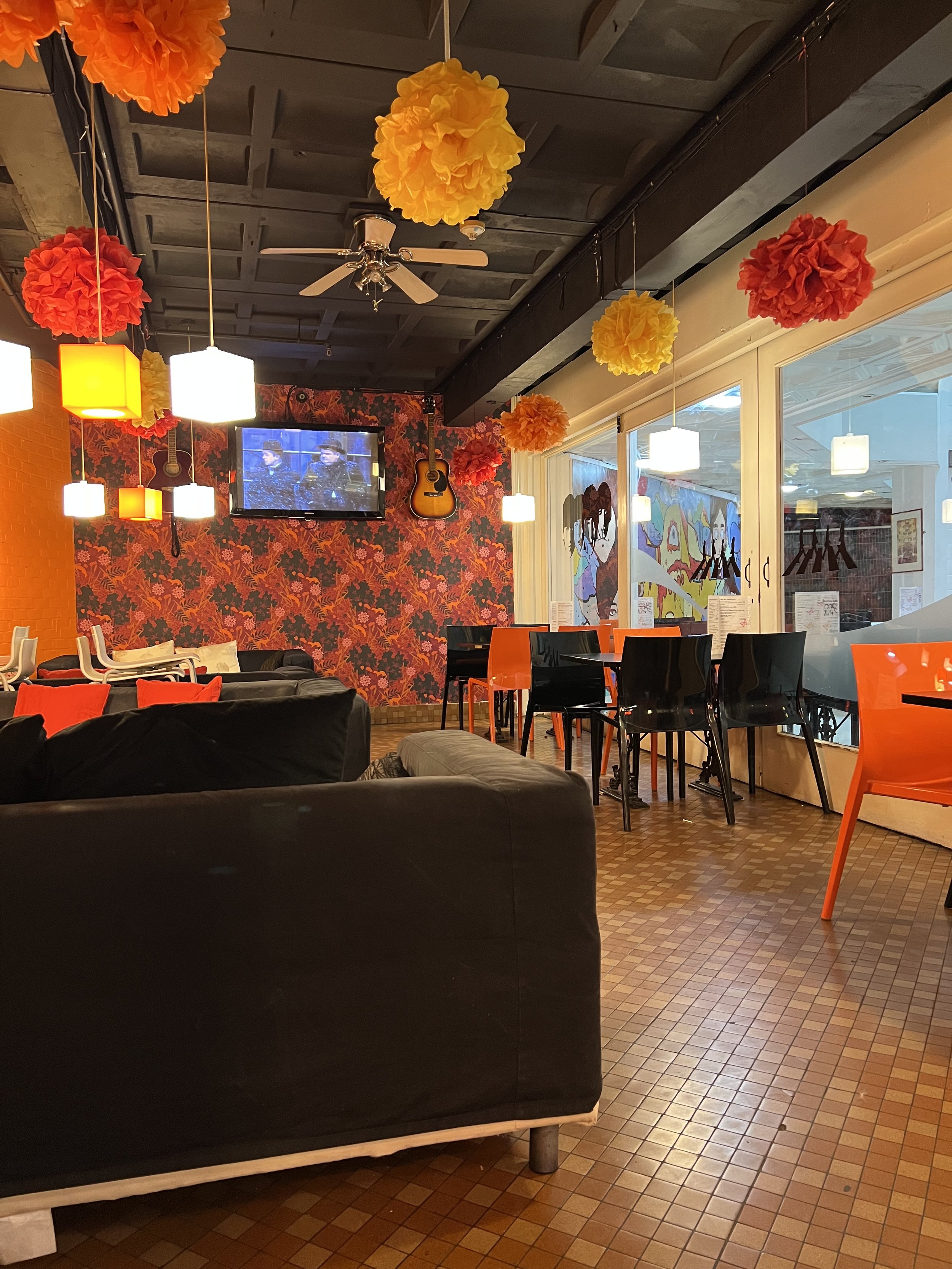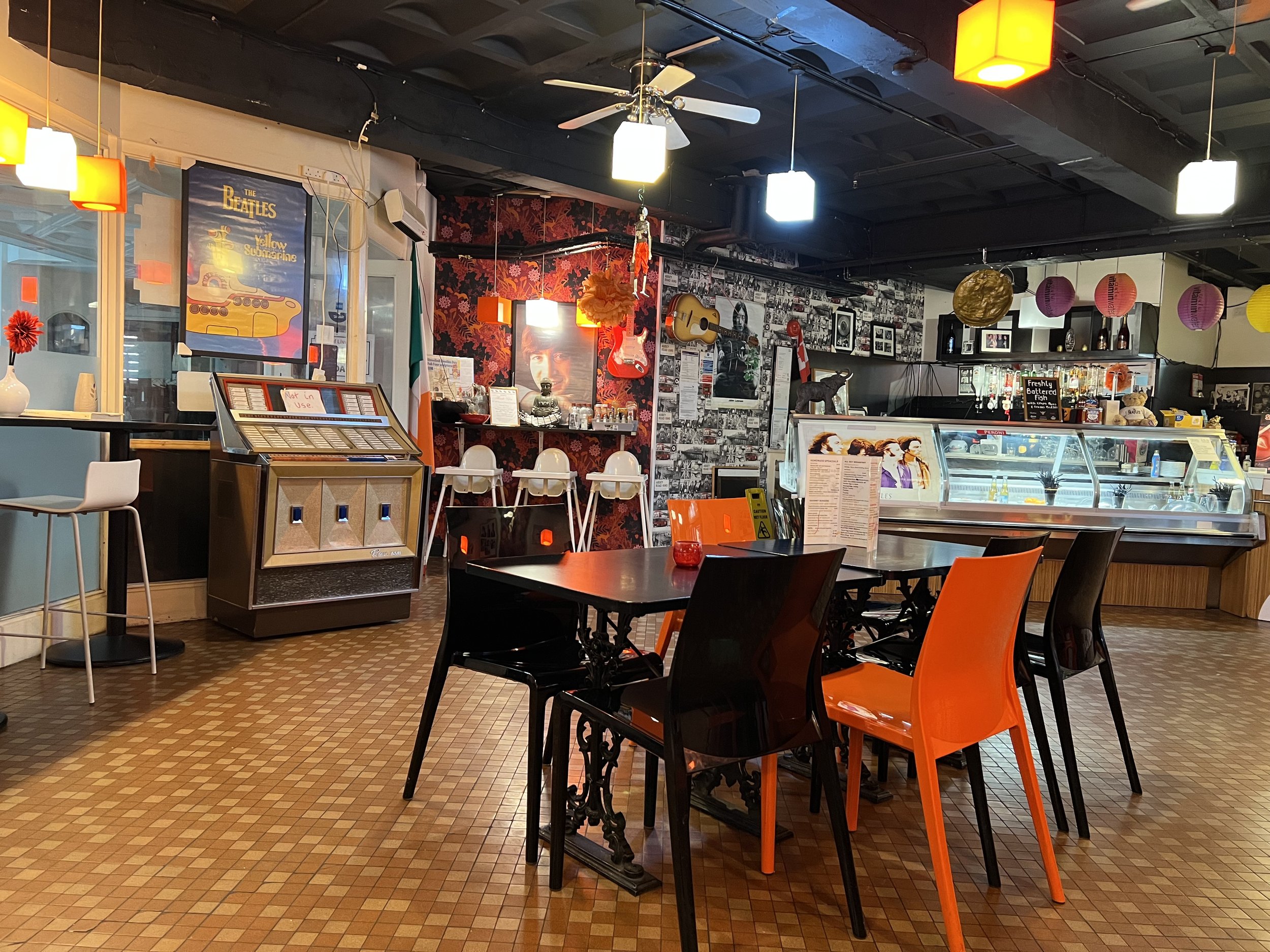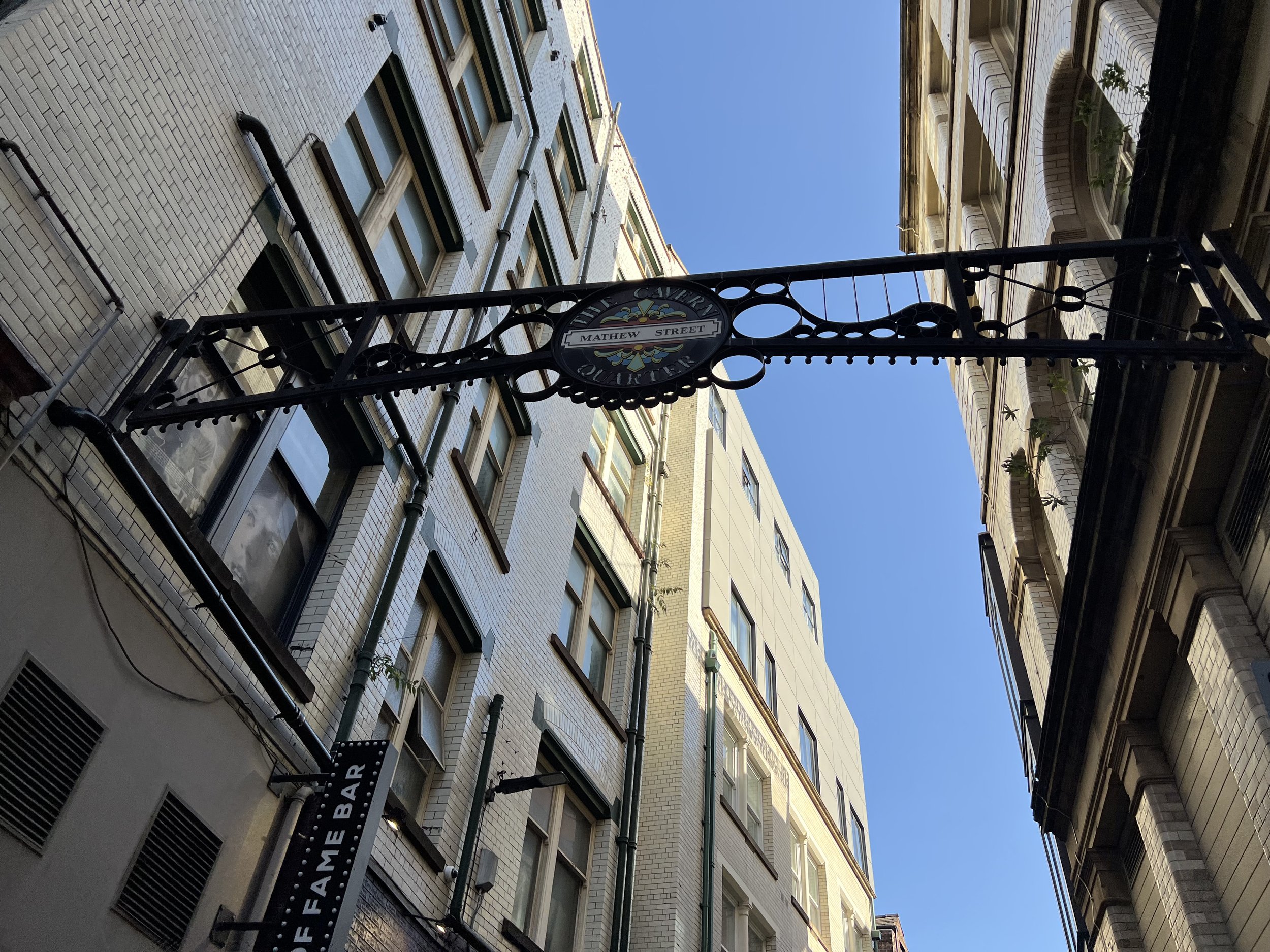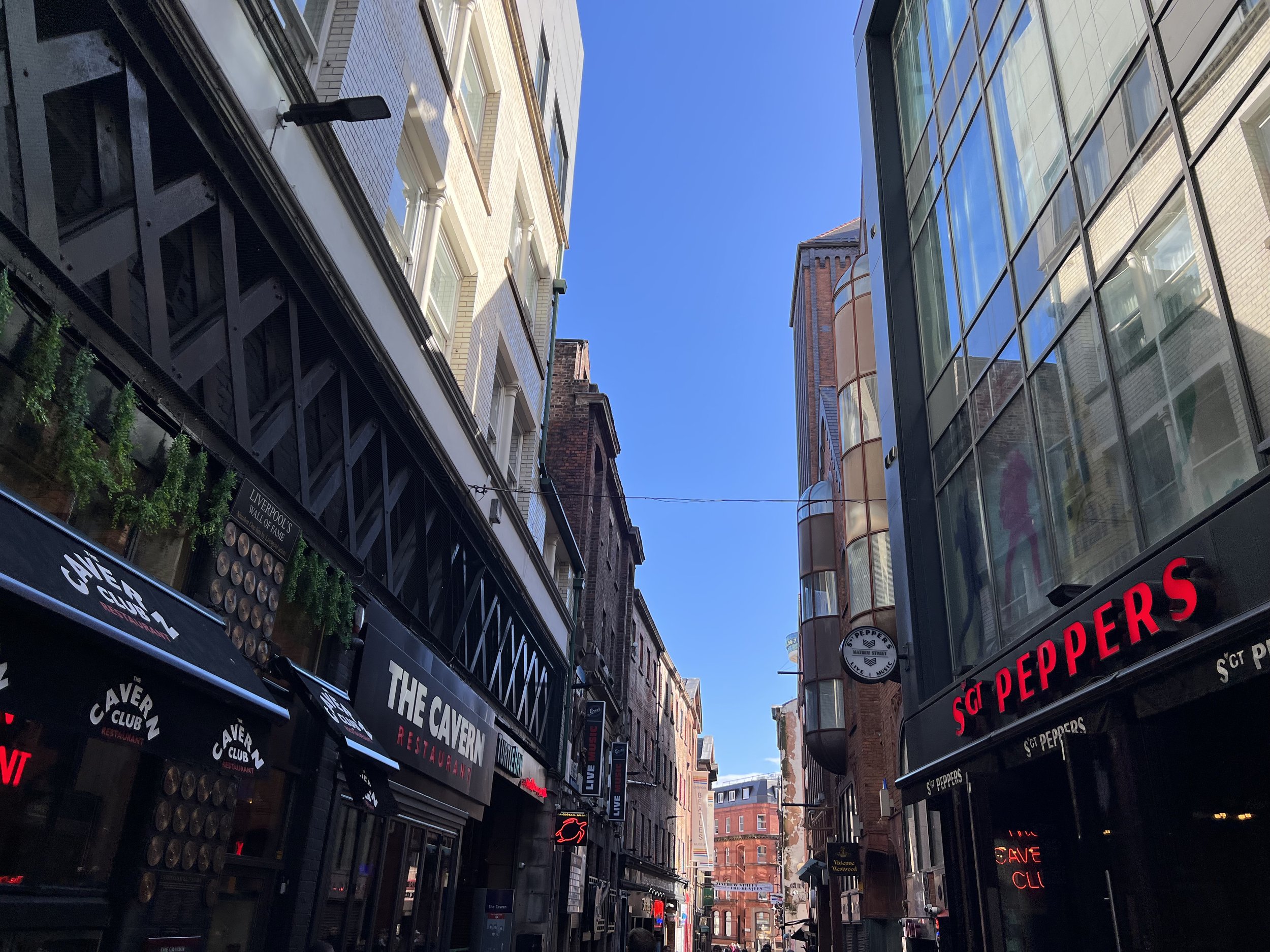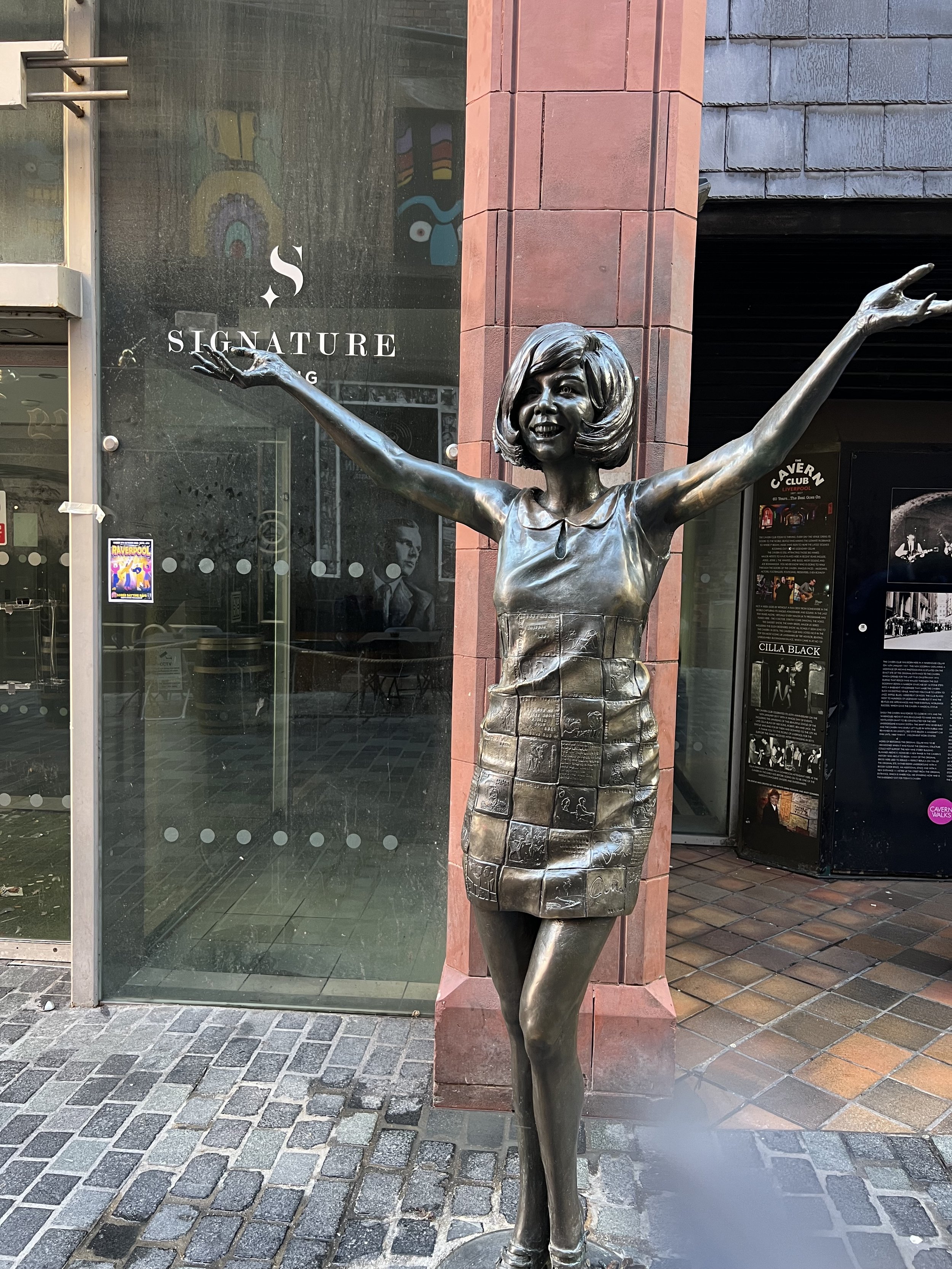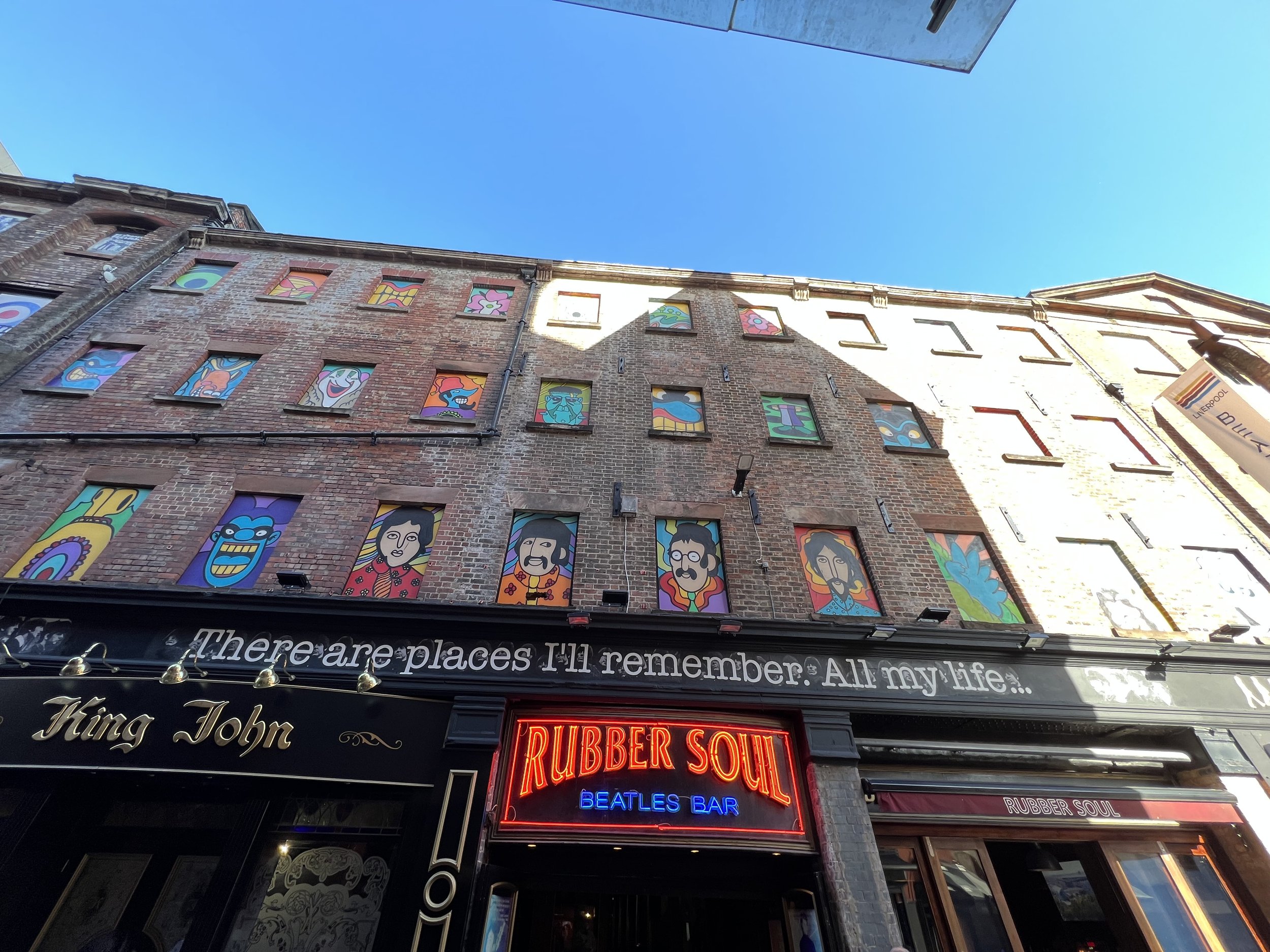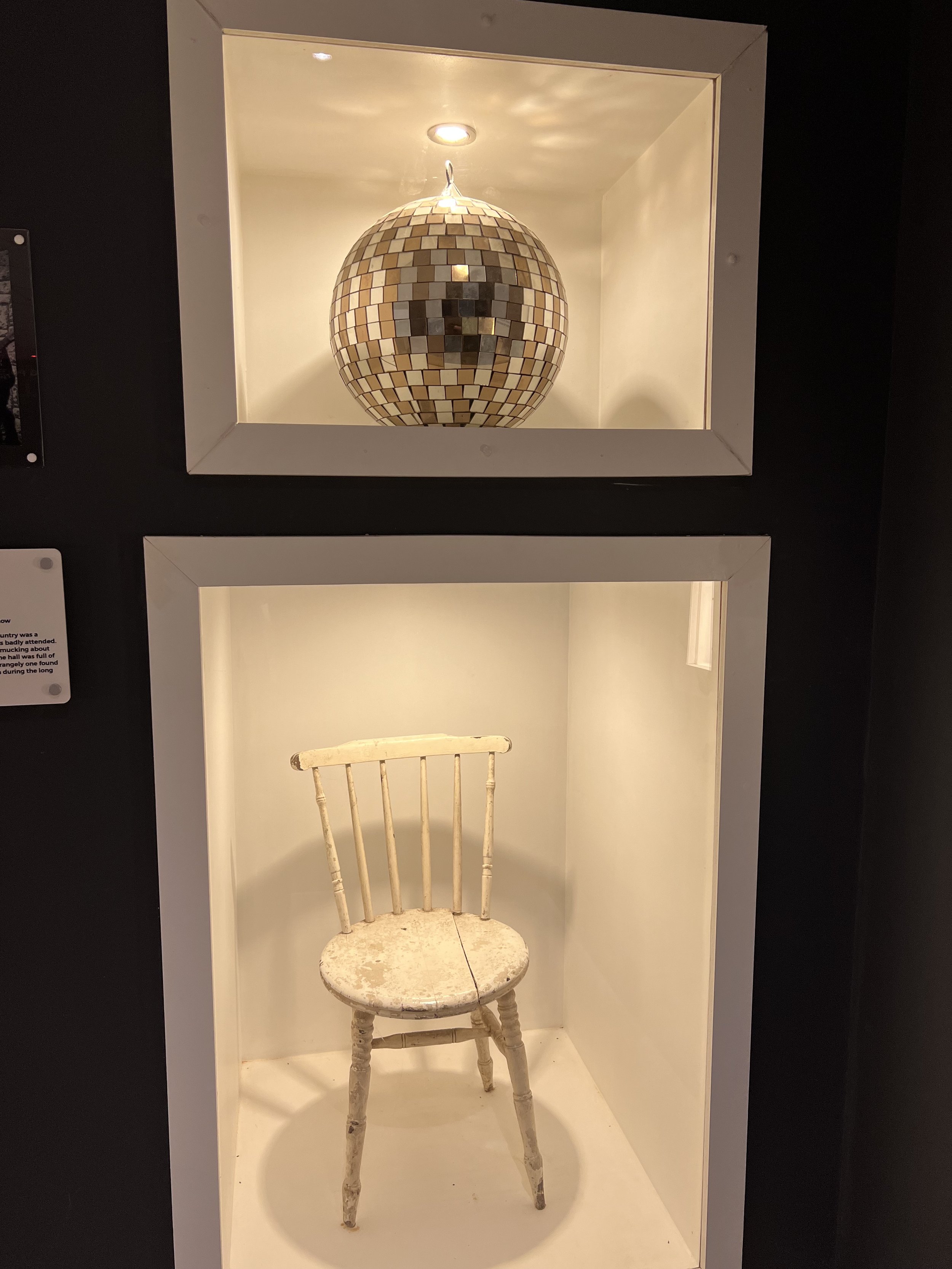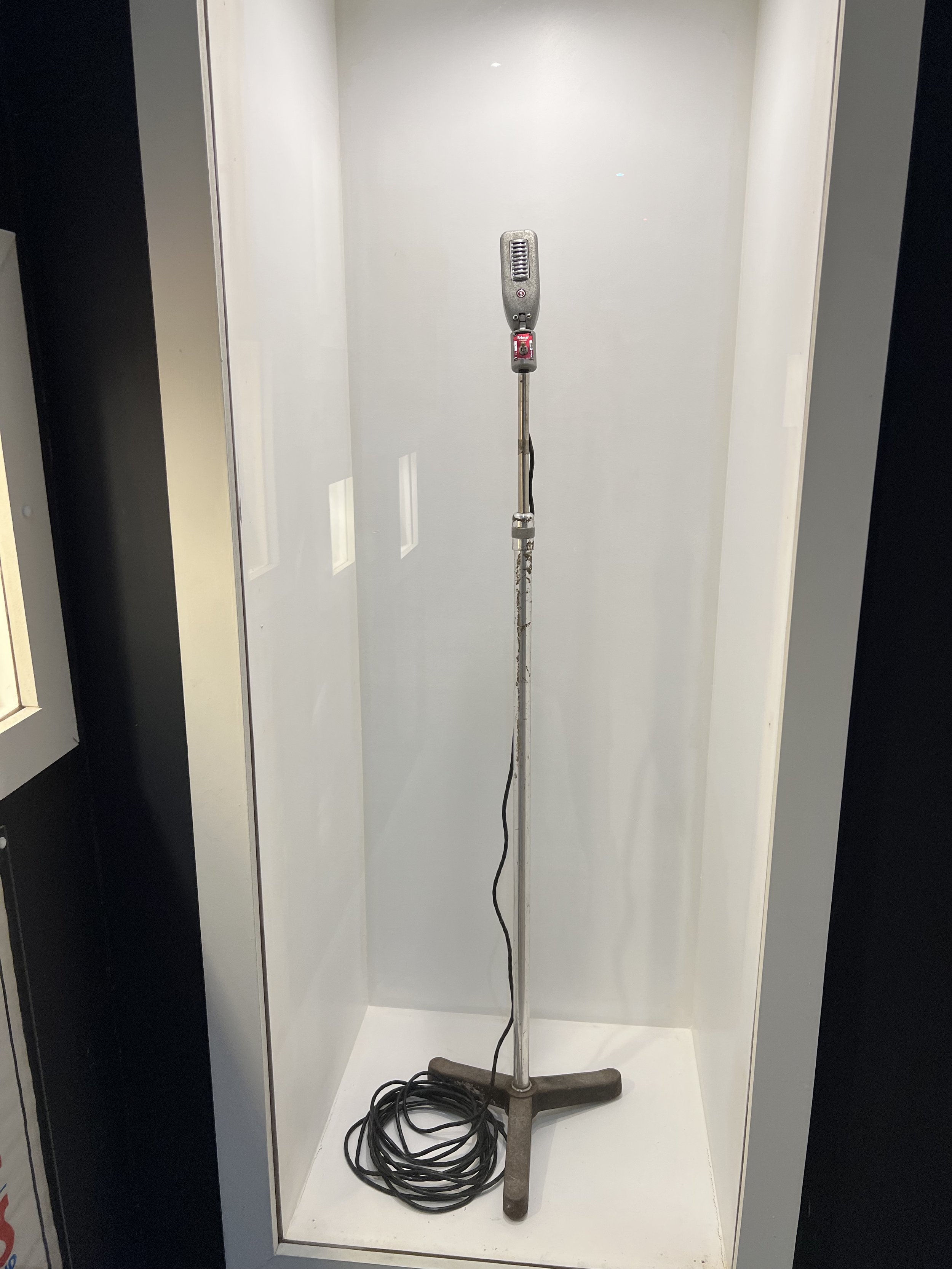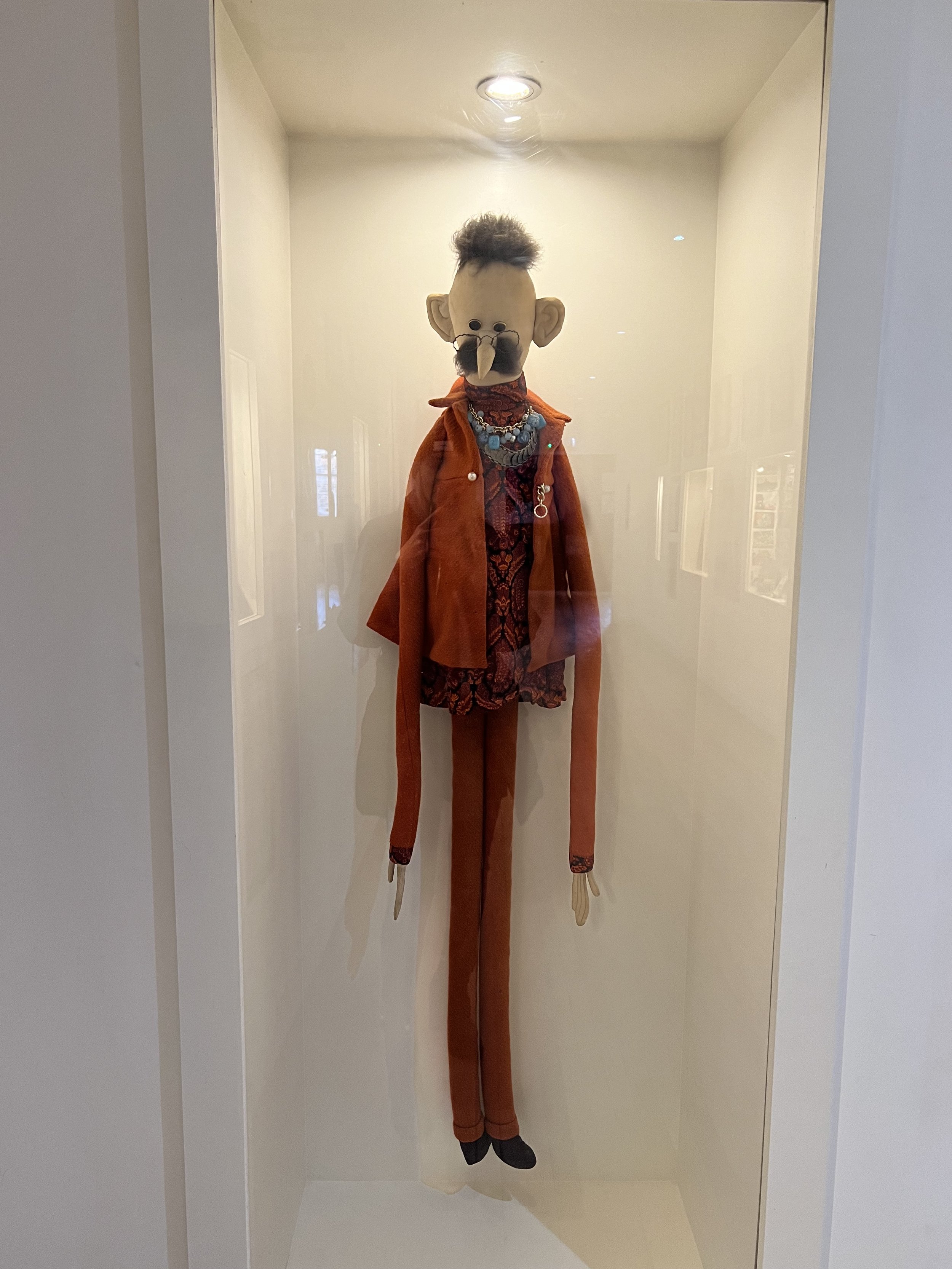Exploring Liverpool, England
Time needed in this town/city: 3-4 nights (more if you take day trips)
I had always associated Liverpool with soccer and a blue collar vibe. I simply had no desire to go. Blackbeard, however, is a huge Liverpool FC and Beatles fan and has always been keen on experiencing what the city now has to offer. I’m very glad we went.
Up until the 1990s, Liverpool was not a place you ever put on your list of cities to visit. It had extremely high crime, drug use, and violence, mainly due to lack of employment. However, hundreds of millions of pounds have flooded the city with revitalization projects, which have completely transformed the landscape you see today.
The below information is a complete guide of the best places to stay, the top rated places to dine and drink, and all there is to see and do. We’ve also included transportation tips, as well as a summary of the history of this amazingly revitalized city!
Jump To:
Where to Stay
Formerly the Royal Insurance building since the 19th century, Marriott did a fantastic job renovating this historic building, turning offices into spacious rooms with great views. It’s fantastic walking distance to everything!
other recommendations
Where to Dine & Drink
Bacaro
Hands down, this is one of the best places we dined at. Their Italian food (small plates) is cooked to perfection and their wine list is fantastic. They have a dedicated gluten-free menu. Price: $$ Celiac-friendly score: A
Barnacle (Michelin-rated)
Above the food stalls of Duke Street Market sits this rustic restaurant with decorative references to the area’s former rope-making businesses. Modern brasserie dishes have a local flavor.
Belzan
A neighborhood bistro and wine bar serving humble dishes, inspired by places they've been and people they've met.
Berry & Rye (Speakeasy)
Located in the Ropewalks district, it’s known for its cocktails, desserts, and charcuterie boards.
Bouchon
Bouchon
Bouchon is a French Bistro located on Castle Street. It didn’t disappoint. Check out Blackbeard’s video short, here. They have a dedicated gluten-free menu. Price: $$ Celiac-friendly score: A
Bundobust
Fans of Dishoom (see my Edinburgh post) will be happy to discover Bundobust - a northern favorite serving up veggie Indian favorites.
Buyers Club
This stripped-back bar, restaurant and summer garden is a little slice of hipster Brooklyn on Hardman Street. Sip on wines by the glass, while dining on the kitchen’s handmade, fresh pasta dishes using high-quality ingredients.
Chantilly Beatles Cafe
When you enter Mathew Street and take a right into the Cavern shops, and down the stairs, you will find a family-owned 60s diner that serves amazing food. For decades, people have been going there to take in all of the Beatles’ artifacts, watch old films, and dine for all meals. Price: $ Celiac-friendly score: A
Duke Street Market
Industrial-chic food hall with trendy eateries cooking up global fare & desserts.
Lerpwl (Michelin-rated)
They are a social fine dining restaurant, based dockside at Royal Albert Dock, with a bias for Welsh produce.
Manifest (Michelin-rated)
Set on the ground floor of a converted warehouse, it serves modern British dishes accompanied by a fantastic wine list.
Maray
In 2014, inspired by their experiences in the cultural melting pot of Le Marais, Paris, they serve Middle Eastern fare, alongside a fantastic wine list.
Röski (Michelin-rated)
Seasonal, fixed price tasting menus with mid-century lighting & banquette seating in a posh setting.
SKAUS
Scandinavian inspired, casual dining, as featured on BBC's My Million Pound Menu.
The Art School (Michelin-rated)
Fine-dining menus prepared from locally sourced produce in a light-filled room with large skylight.
The Oracle
Inspired by Victorian gambling dens with a dash of magic (yes, there are magicians), this Ropewalks hideaway is the ideal spot to quaff down bespoke bevvies while revelling in the vintage decor.
Wreckfish Bistro
They've turned what was a derelict building in the center of Liverpool into a 90-seat restaurant, serving simple bistro food.
Things to See & Do
Beatlemania
The Beatles Statue arrived on Liverpool's Waterfront in December 2015, donated by the famous Cavern Club.
It should be no surprise that the bulk of tourism in Liverpool is due to The Beatles. From Mathew Street, to two Beatles museums, a ton of gift shops, statues and posters everywhere, and a ton of fans that come to pay homage to their “Graceland”, there’s no shortage of this culture - something I came to love.
251 Menlove Avenue
The 1933-built, semi-detached property, which belonged to John Lennon's aunt Mimi and her husband, George Smith, is in Woolton, south Liverpool. Lennon moved there in July 1946 at the age of five after his mother, who was living with her boyfriend, was persuaded that it would be better for his Aunt Mimi and George to take care of him. He remained at this home until mid-1963, when he was 22 years old. In 1965, Mimi sold the property, taking away some of the furnishings and giving away others.
During the filming of the American TV film In His Life: The John Lennon Story in 2000, the then-owner of the house allowed the film crew inside, and also allowed them to knock down a downstairs wall to make room for the cameras. This resulted in 150 bricks being removed, which were later sold to Beatles fans.
In March of 2002, Yoko Ono purchased the property and donated it to the National Trust in order to save it from further demolition and property speculators. It was restored to the 1950s version of itself.
FUN FACT: Every year, on the anniversary of his death, the National Trust leave the bedroom light on in John Lennon's childhood home, all night.
Mathew Street
Mathew street was originally named “Mathew Pluckington Street”, after a famous Liverpool merchant, though it became far more famous for The Cavern Club, who were made famous for helping The Beatles get their start.
It’s here you will find historic bars, as well as those that are capitalizing on the fame of the street, a museum, statues, and more.
Cilla used to work at The Cavern Club cloakroom before her singing career took off. In 2017, as part of the Cavern Club’s 60th anniversary celebrations, this statue of her was unveiled - she died two years before it was.
January 16, 1957, The Cavern Club opened its doors - it would become Liverpool’s first live music venue. A year later, the members that make up The Beatles, started to perform there with their own bands called “Skiffle Groups” (folk rock). On May 25, 1960, Merseybeat was born in the club (with Ringo Starr at the helm), becoming a worldwide influence on music. February 9, 1961, The Beatles performed their first show (Pete Best as the drummer) there and were discovered and signed to a recording label 9 months later. August 19, 1962 Ringo Starr became the drummer and as they say, the rest is history. But, the Cavern Club still sees Paul McCartney from time-to-time, along with other musical acts, such as Adele, The Rolling Stones, and Queen.
Opened in the 1960s, The Grapes was the only pub on Mathew Street and was frequented The Beatles, who would sit by the women’s bathrooms to see the women come in and out. Pete Best famously went to the grapes to drown his sorrows when he was kicked out of the band and famously, George Harrison got a black eye outside of there… because Pete had been kicked out of the band.
A newer bar down Mathew Street, it plays live music seven days a week.
Is the number one club in Liverpool, known for live music that appeals to all ages.
The statue was sculpted by local artist Arthur Dooley and based on a photograph that was later used as the cover of Lennon's solo album " Rock N Roll ". The wall of fame on the wall behind the statue has the names of the 1,801 bands and artists who played at the original Cavern Club, including the Rolling Stones, Queen, and the Beatles.
To be honest, The Beatles Museum on Mathew Street was not our favorite, Though there were three floors of memorabilia laid out in a timeline, many of the artifacts came from the Pete Best family, which told more of his side of it than of the entire band, throughout its existence. It’s still worth it to see the collection and prep you for the next (and best) museum below.
Strawberry Fields
Operating as a children's home between 1936 and 2005, the house and grounds had originally been built as a private residence in the Victorian era before being acquired by the Salvation Army in the 1930s. The house was demolished in 1973, due to structural problems, and replaced with purpose-built units. After being closed as a children's home, the site has continued to be used by the Salvation Army for other purposes. What makes it famous is the Beatles' 1967 single, "Strawberry Fields Forever", written by John Lennon, who had grown up nearby and played in the grounds of the home as a child.
The Beatles Story
The Beatles Story is located on the Royal Albert Dock and is owned by Mersey Ferries. The Museum/Exhibition contains recreations of The Casbah Coffee Club, The Cavern Club, and Abbey Road Studios, among other historical Beatles artifacts, such as John Lennon's spectacles, George Harrison's first guitar, and a detailed history about the British Invasion and the solo careers of every Beatle.
TIP: For discounted tickets, click here.
Day Tours
history of liverpool walking tour
See the sights of Liverpool and learn about its history–dating all the way back to 1207 on this walking tour. Save hours of research time and instead, let your historian guide explain the timeline of the city. The tour visits highlights such as the Royal Liver Building, Liverpool Town Hall, the Queen Victoria Monument, the Old Dock, and the Royal Albert Dock.
Liverpool Ghost Walking Tour
After darkness has fallen, meet your guide on the famous Hope Street and set off in search of the restless spirits who are said to roam the city at night. Stroll down one of northern England’s most haunted streets, visit the eerie cemetery at Anglican Cathedral, and hear blood-curdling stories of ‘Lantern Jaw,’ the woman in white and the local man who lost his soul to the Devil.
Northern Wales
The sights and scenery of North Wales are tricky to explore from Liverpool without a rental car. Rather than string together train and bus journeys; choose this full-day tour for the benefit of comfortable minivan transport and a guide for background on the sights. Walk Llandudno’s pier, follow hidden roads through Snowdonia, visit Conwy Castle, and more; and discover this beautiful corner of Britain without a care in the world.
NOTE: We did this tour and absolutely loved it. Click here for our experience.
Historical Exploration
Merseyside Maritime Museum
Located in the heart of the Albert Dock, it’s the ideal location to explore and uncover the development of the world famous port. Boats, paintings, ship models, ship wrecked objects, uniforms and more are on display.
Museum of Liverpool
Opened in 2011, the museum displays are divided into four main themes: The Great Port, Global City, People's Republic, and Wondrous Place, located in four large gallery spaces.
The Bluecoat
Built in 1716-1717 as a charity school, it’s the oldest surviving building in Liverpool. In 1906, the school moved to another site and was then rented from 1907, onwards, by the Sandon Studios Society. Based on the presence of this art society and the subsequent formation of the Bluecoat Society of Arts in 1927, the successor organization laid claim to being the oldest arts center in Great Britain, now called “The Bluecoat”.
The Royal Liver Building Clock Tower Tour
Built between 1908 and 1911, the Grade I-listed Royal Liver Building (that’s ‘liver’ to rhyme with ‘diver’) is one of the sights that earned Liverpool its Unesco World Heritage status. It was designed by Walter Aubrey Thomas for an insurance company and was one of the first structures in the world to be built using reinforced concrete. Its most notable features are its two clock towers, atop which perch two mythical, cormorant-like liver birds. A tour of the clock tower offers superb views from what is the city’s most famous landmark.
Williamson Tunnels
The Williamson Tunnels are a series of extensive subterranean excavations of unknown purpose, in the Edge Hill area of Liverpool. They are thought to have been created under the direction of tobacco merchant, landowner and philanthropist, Joseph Williamson, between 1810 and 1840.
Religious History
Liverpool Cathedral
The cathedral is based on a design by Giles Gilbert Scott and was constructed between 1904 and 1978. The total external length of the building, including the Lady Chapel (dedicated to the Blessed Virgin), is 207 yards, making it the longest cathedral in the world. In terms of overall volume, Liverpool Cathedral ranks as the fifth-largest cathedral in the world.
The Arts & Sciences
British Music Experience
The British Music Experience tells the story of British Music through costumes, instruments, performance and memorabilia. See outfits worn by artists from Freddie Mercury and Dusty Springfield, to the Spice Girls, Adam Ant and X Factor finalists and musical instruments played by some of the world’s most renowned artists from Noel Gallagher to the Sex Pistols. There's even hand-written song lyrics from Adele, the original statues from the Brits and the Apple Corp front door from Saville Row. You can learn a musical instrument in the Gibson Interactive Studio with the best music equipment available, from electric guitars to drum kits and keyboards. Have a go at Dance the Decades with a dance instructor guiding you through to making your own dance video. Don't forget to stick around for a hologram performance.
Superlambanana
Superlambanana is a bright yellow sculpture in Liverpool, weighing almost 7.9 long tons and standing at 17 feet tall. It is intended to be a cross between a banana and a lamb and was designed by New York City-based Japanese artist, Taro Chiezo. It currently stands in Tithebarn Street, outside the Avril Robarts Library of Liverpool John Moores University, having previously been located on Wapping near the Albert Dock.
Walker Art Gallery
The Walker Art Gallery's collection dates from 1819 when the Liverpool Royal Institution acquired 37 paintings from the collection of William Roscoe, who had to sell his collection following the failure of his banking business. In 1843, the Royal Institution's collection was displayed in a purpose-built gallery next to the Institution's main premises.
William Brown Library and Museum opened in 1860, named after a Liverpool merchant whose generosity enabled the Town Council to act upon an 1852 Act of Parliament, which allowed the establishment of a public library, museum and art gallery.
In 1871, the council organized the first Liverpool Autumn Exhibition, held at the new library and museum. The success of the exhibition enabled the Library, Museum and Arts Committee to purchase works for the council's permanent collection, buying around 150 works between 1871 and 1910. With this collection continuing to grow, they opened the Walker Art Gallery in 1877. It’s expanded several times since then.
World Museum
Open since 1851, it’s been renovated multiple times to accommodate its growing collections. The museum currently houses an aquarium and live bug house, and is also home to a variety of exotic animals. It’s free entry.
Unique Experiences
Bold Street Time Slips
Bold Street is a street known for its concentration of independent businesses and for the Church of St Luke (locally known as the "bombed-out church"), which is situated at the top end. The bottom end leads into the area surrounding Clayton Square, which is part of the main retail district of central Liverpool. The bottom end contains more shops, which are chain stores. Liverpool Central, a major hub of the Merseyrail rapid transit/commuter rail network, can also be accessed, via an entrance on Bold Street next to The Lyceum, a post office which was Europe's first lending library. The middle area contains bars as it leads towards Concert Square, a square containing clubs and bars, and the top end contains more independent shops and cafes. For the most part, Bold Street is pedestrianised and cars do not have access.
So why is this significant? Well, if you believe in the paranormal, time travel, and all that jazz, then you will find it interesting to know that there are now several accounts of “time slipping” experiences with people who have no belief in this kind of thing. Time slipping is the act of suddenly being immersed in a different period of time for only a moment - most are experiencing the 1950s and the 1960s, while others it’s the 1800s. One woman’s account is that she was looking in a store window, turned around, and it was a different time period.
Whether it is a legend or not, Bold Street is a great street to check out independent shops and cafes.
ghetto golf
Two levels of an 18-hole mini golf course with hip hop, neon lights, salvaged bits from airplanes, amusement parks and store fronts and more - Ghetto Golf took this activity to a whole new level. They even have food (limited to grilled and fried items) and a bar on site. TIP: Make sure to book a time in advance as it gets busy.
Liverpool FC Game
Getting tickets is fairly tricky, since almost all seats at Anfield Stadium are secured by season ticket holders (scalping is illegal and if you’re caught with a purchased ticket via that method, you will be kicked out). At a larger cost, you can purchase a food and drink package with your seats (a lot of those are available) but note that there’s no alcohol permitted at the stadium - you can head to any number of pubs or beer trucks before the game.
WANT TO TAKE A TOUR OF THE STADIUM? Click here to book!
Radio City Tower
Radio City gives you a unique opportunity to view Merseyside's ever changing skyline over 400 feet above the heart of the city center. It offers breathtaking panoramic views of the Wirral, North Wales, Lancashire and as far as Snowdonia and Blackpool on clearer days.
Walking Tours
Chinatown
Liverpool is known for one of the oldest Chinese communities in the U.K. It’s also considered the sister city to Shanghai, which you can see as you enter the red gate that was shipped to Liverpool from them. Pick up traditional spices and food at the Chung Wah Supermarket, China City has authentic food and karaoke, Chamber 36 focuses on Asian food from around the continent, and stop by Bon Bon bakery for pillowy cakes.
Port Sunlight
A picturesque village on The Wirral, founded by William Hesketh Lever, in 1888 as a place for ‘Sunlight Soap’ factory workers to live.
The historical significance of Port Sunlight lies in its combination of model industrial housing, providing materially decent conditions for working people, with the architectural and landscape values of the garden suburb, influenced by the ideas of William Morris and the Arts and Crafts Movement. Each block of houses was designed by a different architect. The backs of any of the houses cannot be seen, and each house is unique. In terms of architectural features, there is half-timbering, carved woodwork and masonry, pargetting (ornamental plaster work) moulded and twisted chimneys and leaded glazed patterns. Some houses were built in Flemish style, with bricks imported from Belgium.
Sefton Park Botanical Gardens
Henry Yates Thompson was the eldest son of an important banking family from Liverpool and the great nephew of the founder of Princes Park. In 1896, he gifted £10,000 to the city to fund the construction of the Palm House. During the Blitz of May 1941, the Palm House was badly damaged however, it was later rescued by the “Save the Palm House” campaign in 1992. Today, the botanical collection has over 200 plants, some of which are extremely rare and one that is extinct in the wild. They are representative of 5 continents.
St George’s Quarter
Directly opposite Lime Street Station you’ll find St George’s Hall, home to the stunning Minton floor tiles that are revealed once a year, huge events, and tours around the catacombs, cells and rooms of the magnificent building. The quarter is also home to the World Museum, The Walker Art Gallery, and the Liverpool Central Library.
The Royal Albert Dock
After a turbulent history, The Royal Albert Dock is a vibrant waterfront area with museums, shops, restaurants, cafes, pubs. and historical artifacts. You can easily lose track of time exploring it all.
Wandering The Streets of Liverpool
How to Get Around
airport transfers
Manchester Airport to Liverpool can be a bit expensive, though necessary. Taxis and ride shares are available, though we find ride shares to be less expensive.
TIP: If you are checking into a flight out of Manchester, make sure there are absolutely NO electronics or liquids in your bag - even a curling iron. It caused me a one hour delay as nearly everyone was in line to have their bag checked.
getting around the city
We found that both taxis and ride shares are aplenty in the city, though it is also very walkable!
A History Summary
Iron Age - Though sparsely populated during this era, there is evidence of humans being in the area. The region was inhabited by Brythonic tribes, the Setantii as well as nearby Cornovii and Deceangli.
70 AD - The main Roman presence was at the fortress and settlement at Chester. This was due to the northward advance to crush the druid resistance on Anglesey and to end the internal strife between the ruling family of Brigantes.
900s - A Viking settlement was made in the aftermath of the expulsion of the Vikings from Dublin in 902 and an unsuccessful attempt to settle on Anglesey soon afterwards. The Norse settlers eventually joined up with another group of Viking settlers who populated west Lancashire, and for a time, had an independent Viking mini-state, with Viking place names evident all over Merseyside.
1190 - Earliest history was recorded here when the place was known as 'Liuerpul' (muddy pool or creek).
1207 - The borough was founded by royal charter, by King John, made up of only seven streets in the shape of the letter 'H'.
1235 - 1726 - The building of Liverpool Castle was completed. This stood on the spot where the Victoria monument now stands, on the aptly named Castle Street, and was removed in 1726.
1257 - St Nicholas Church was built, originally as a chapel within the parish of Walton-on-the-Hill.
Mid-14th century - The town remained relatively small with a population of 1,000.
1424 - The Stanley family fortified their house by building Stanley Tower on Water Street. This was a catalyst for a feud between the Stanley and Molyneux families since the Molyneux family had permission to live at the nearby Liverpool Castle at that time. It sparked a riot.
16th century - Population fell to 600 and the port was regarded as subordinate to Chester until the 1650s.
1571 - The people of Liverpool sent a memorial to Queen Elizabeth I, praying for financial relief as the town was falling apart.
1626 - King Charles I gave the town a new and improved charter.
1643 - 1644 - After the Roundheads captured Liverpool in 1643, a second siege took place in June 1644, led by Prince Rupert of the Rhine, who arrived in Liverpool with 10,000 men in an attempt to capture Liverpool Castle for the King. Prince Rupert succeeded in capturing the town and the castle but later that same year the Roundheads recaptured Liverpool.
1648 - The first cargo from the Americas was recorded.
1660 - The development of the town accelerated after the Restoration of 1660, with the growth of trade with America and the West Indies.
1667 - The town’s first sugar refinery was opened.
1699 - The first known slave ship departed the docks.
18th century - Population grew from 6,000 - 80,000.
1715 - The world’s first commercial wet dock was completed in Liverpool on the River Mersey. It accommodated up to 100 ships and was originally a tidal basin accessed directly from the river, and by 1737, via Canning Dock.
1718 - The Bluecoat Hospital for poor children was established.
1754 - The Town Hall was opened.
1808 - Office buildings, including the Corn Exchange, were opened.
1810 - Regularly scheduled Liverpool transatlantic passenger travel began.
1824 - 1858 - More than 140 acres of new docks, with 10 miles of quay space, were opened between
1830 - The Liverpool and Manchester Railway was opened.
1837 - The Grand National steeplechase was first run at Aintree,
1840s - Liverpool-based companies' emerged that included Cunard Line and White Star Line.
1846 - The completion of the architectural triumph,The Albert Dock, which changed the way the docks worked in the city forever. Its serene waters stretched the size of three football pitches with 40% of global trade passing through Liverpool’s docks by the beginning of the 19th century. Officially opened on July 30, 1846 by HRH Prince Albert, the dock went onto to play an important role in WWII and was awarded Grade I listed status, making it the largest single collection of Grade I listed buildings anywhere in the UK. (The White Star Line and Cunard were based in the city, operating cruise ships all over the world. Many Liverpudlians worked on these ships.)
1851 - One-quarter of inhabitants were Irish.
1854 - St. George’s Hall and Lime St. Station were constructed.
1862 - The last slave ship left the docks for a total of a total of 4,973 voyages.
Late 1860s - Many Chinese immigrants first arrived in Liverpool as a result of employment of Chinese seamen by the Blue Funnel Shipping Line, creating strong links between the cities of Shanghai, Hong Kong and Liverpool, mainly importing silk, cotton and tea.
1880 - Liverpool was granted city status.
1881 - Liverpool University was established.
1892 - Liverpool FC was formed.
1893 - The world's first fully electrically powered overhead railway, the Liverpool Overhead Railway opened.
1901 - The city had a population of 700,000.
1916 - Three Pier Head buildings, including the Liver Building, were complete.
1920s - 1930s - The city’s unemployment rate was well above the national average, causing many to be homeless. About 15% of the city's population were rehoused, with more than 30,000 new council houses being built to replace the slums in the city. Liverpool also became nationally known for its occasionally violent religious sectarianism.
1934 - The city gained its first direct road link with the Wirral Peninsula, when the first Mersey Tunnel road was opened.
1939 - 1945 - Liverpool was the control center for the Battle of the Atlantic. There were 80 air-raids on Merseyside, with an especially concentrated series of raids in May 1941, which interrupted operations at the docks for almost a week.
1940 - Liverpool suffered during WWII, as a result of the Blitz, with 80 air raids devastating homes and killing over 2,700 Liverpudlians.
1956 - Liverpool Overhead Railway and its fourteen stations were closed and demolished.
1960s - Liverpool became a centre of youth culture. The city produced the distinctive Merseybeat sound, most famously The Beatles, and the Liverpool poets. Also, Liverpool Corporation Tramways closed after the last tram ran in Liverpool, during this year.
1972 - Liverpool Central High Level railway station closed, as well as the Waterloo, Victoria, and Wapping tunnels. The Canadian Pacific unit CP Ships were the last transatlantic line to operate from Liverpool.
1977 - The Liverpool Exchange railway station closed.
1979 - The North Liverpool Extension Line closed.
1980s - Endless factory closures and some of the highest unemployment rates in the UK. happened during this decade. An average of 12,000 people, each year, were leaving the city, and 15% of its land was vacant or derelict.
1981 - Toxteth Riots took place. The Tate and Lyle sugar works, previously a mainstay of the city's manufacturing economy, closed down.
1985 - The population had fallen to 460,000, unemployment rose to 20%, and heroine use rose.
1989 - 97 Liverpool F.C. fans died in the Hillsborough disaster at an FA Cup semi-final in Sheffield. This resulted in legally imposed changes in the way in which football fans have since been accommodated, including compulsory all-seater stadiums at all leading English clubs by the mid-1990s. Many clubs removed their perimeter fencing almost immediately after the tragedy and such measures at football grounds in England have long since been banned.
1990s - today - Regeneration of the city has taken place.
July 2004 - Liverpool received the UNESCO World Heritage accolade after a bid, centered on Liverpool as a Maritime Mercantile city (it since lost that designation in 2021).
2008 - Liverpool was awarded European Capital of Culture, which prompted a £920 million P”aradise Project”. The 11,000 seat arena and convention center, the M&S Bank Arena, also opened in this year.
December 2015 - Liverpool was honored with a ‘City of Music’ UNESCO due to the incredible music scene in the city.


